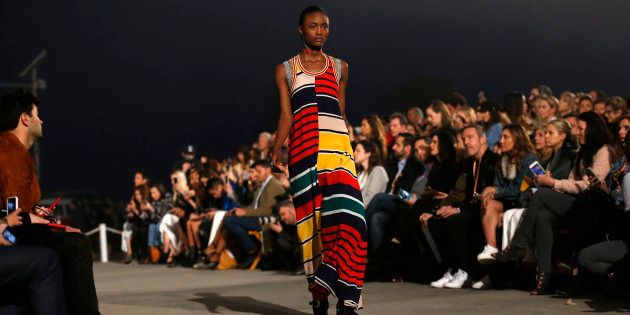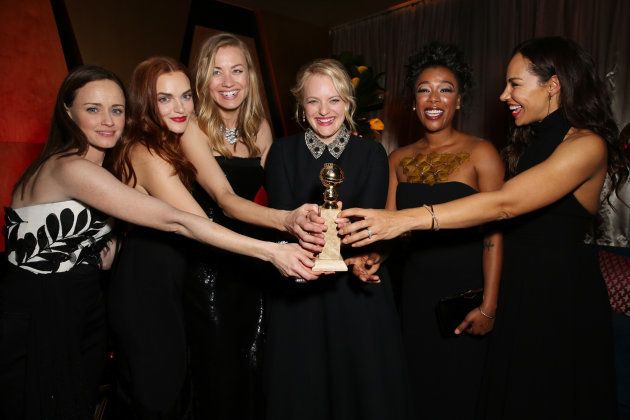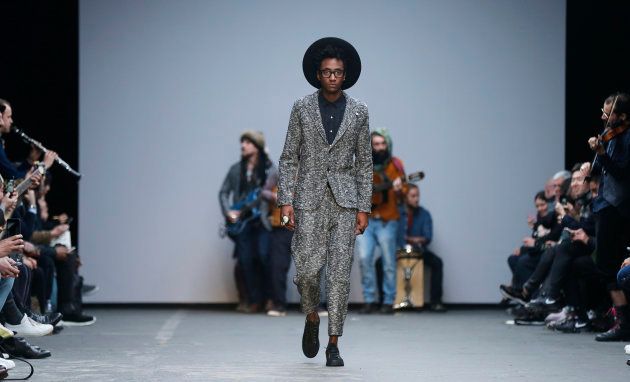
"What I know for sure is that speaking your truth is the most powerful tool we all have... Each of us in this room are celebrated because of the stories that we tell, and this year, we became the story."
Oprah Winfrey's inspired speech at the 2018 Golden Globe Awards encapsulated the essence of the viral Time's Up movement – a movement that also inspired most of the celebrity attendees to wear black at the Golden Globes and white roses, later, at the Grammys.
This raises the question of fashion as a means to make a statement. Can fashion be an agent of change? Can it tell a story?
I believe it can. For me, our bodies are intrinsically political. We don't get to choose our genetic makeup and many of our religious or cultural associations are predetermined. What we do have is the power to reject an abrasive society of norms or ideals by forming our own beliefs and identity.
And historically, humans have done this with clothing. Think of the miniskirt, the pantsuit, the beret and the burka – just a few examples of controversial clothing items that have been the subject of intense scrutiny, but also symbols of liberation.

The burka is an interesting example. While for some time it was frowned upon as a symbol of oppression, Middle Eastern designers have gone to great lengths to show that not only is there tremendous value in cultural dress, but that some women choose to wear the burka as a form of agency, and a demonstration of their power to transform cultural forms of dress into empowering modes of fashion.
For me, this raises an important distinction: the distance between when something is just clothing, and when it's fashion. Fashion means you're thinking about what you're wearing. There's an energy attached to it. That's when clothing becomes fashion. It comes down to telling an honest story.
For women, using fashion to make a statement has been a necessity, due largely to a history of oppression.
Delving into the Golden Globes:
The radical colour association is one way to tell a story that's come a full circle. Colour is often aligned with a system of beliefs, a symbol or a means of communicating a protest or ideology. For example, historically it's been used in gay culture to communicate certain aspects of people's sexual proclivities. Another example is the Black Lives Matter movement, or the pink hats of the Women's March. We've come back to colour being a means of communicating a powerful idea.
At the Golden Globes, the celebrities' choice to wear black was a strong statement of solidarity. It was an expression of alignment with issues far greater than the traditional domain of what celebrity means – stereotypically, fame and awards – and for that I applaud them. It's exciting to see an awards ceremony become a more politicised platform.
I think the danger of superficiality creeps in when people emulate celebrities or pretend to care about a cause because it's cool. Therefore, I advise caution – people need to be honest. Don't take these issues lightly. Educate yourself – think about and understand what you're advocating for or against. Get to grips with the complexities before you commit. Tell an honest story you genuinely care about.

Women using fashion to make a statement:
The Time's Up movement is the continuation of a long trend of women using fashion to advocate for change. Think of the [mythical] bra-burning in the 60s, the corset-tossing of the post-war twenties, the passion evoked by Hillary Clinton's white pantsuit – itself a nod to the suffragette movement. For women, using fashion to make a statement has been a necessity, due largely to a history of oppression.
Therefore, I would argue fashion is both a medium for change and an expression of a change that's already underway. When people come from different parts of the world, speak different languages and have myriad cultures and values, sometimes fashion can be the simplest visual summary of unity. It can be a beautiful and concise way to say something.
The miniskirt is one of my favourite examples. It marked a huge change; suddenly women were acknowledged to have sexual agency, freedom of expression, ownership over their bodies and the right to choose what they wore.
Of course, in a South African context, the miniskirt has had tremendously problematic connotations as well – I refer to when it was criticised for being overtly sexual and an invitation for harassment or worse. Now, we've thankfully moved into another phase, where it's been reasserted as a symbol of agency.
Fashion is not the full story, but it can be an important part of it.
The role of fashion in identity:
I'm very interested in costumes – uniforms especially. When you see a policeman, for example, you immediately have set fears, ideas and appropriations of what the police mean – that shows how powerful fashion is. I think we're experiencing the extreme repoliticisation of fashion; we're in an age of extreme expression. What is normal anymore?
Gender, race, etc. are becoming blurred, which means fashion is more fluid and we have broader means to identify ourselves. More identities, subcultures, and sub-identities within subcultures. I think there's also a group fashion association that is becoming more deeply entrenched. Think of the granny dandies of Osborne Macharia's striking photographs.
We live in an exciting time of fashion "gangs" popping up everywhere. It's like the 80s in a way.
Fashion in 2018:
I think men are moving towards clothing that holds a hint of romanticised nostalgia – a longing for a simpler time. Although having said that, young men, in particular, don't want to be affiliated with all the negative masculinity of previous generations. They want simplicity and edginess in their attire. For women, I think there's a wonderful "witchiness" emerging. A kind of "Stevie Nicks" movement that focuses on freedom, empowerment and comfort.
I think more people will use fashion as a form of expression, identity-seeking and statement-making in 2018. But clothing is not always to be taken lightly. Let's not turn political beliefs into a form of pop-culture consumption. Fashion is not the full story, but it can be an important part of it.

Some of the significant ways fashion was used to make a statement in recent history:
- The pink Pussyhat Project as a defiant feminist symbol for the 2017 and 2018 Women's Marches and reaction against Trump's sexist comment.
- Protesters wearing the iconic red cloak and white bonnet from The Handmaid's Tale to protest against the defunding of Planned Parenthood.
- French male bus drivers wearing skirts to protest their dress code.
- Katherine Hamnett's "Cancel Brexit" slogan T-shirt campaign.
- Sies! Isabelle's #FeesMustFall placards on the SAFW catwalk.
- Celebrities wearing black at the 2018 Golden Globe Awards.
- Beyonce's electrifying Super Bowl performance in homage to the Black Panthers and Black Lives Matter Movement.
- The EFF's "Fear Fokkol" T-shirt campaign debuted during the 2017 State of the Nation address.
Jason Basson is the fashion director atSuperbalist.com
